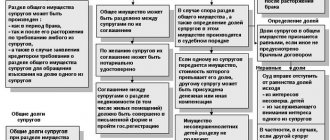If the court receives an application to apply the statute of limitations, most likely the court will refuse to satisfy the claims. Of course, if the deadline for going to court has actually passed.
According to general rules, the plaintiff has the right to demand protection or restoration of his rights within 3 years from the moment the relevant grounds are identified. The period has been reduced to protect labor rights (for more details, an application for restoration of the period in labor disputes), for claims to invalidate a transaction, etc. Only the defendant can refer to missing the statute of limitations.
It is not difficult to prepare an application for the application of the statute of limitations on your own. And, as a rule, no additional documents are required to be submitted to the court. General recommendations for drafting the document are posted below. The nuances can be discussed with the site’s on-duty lawyer.
:
Application for application of the statute of limitations
When to file an application for the application of the statute of limitations
Issues of compliance by the plaintiff with the statute of limitations must be examined at the preliminary court hearing. Therefore, it is best to prepare such a statement immediately after receiving a copy of the statement of claim. You can make a request to recognize the statute of limitations as expired during the preparation of a civil case. But the court may give the plaintiff time to apply to restore the statute of limitations.
It is the defendant’s right to file a complaint about missing a deadline. The court is not obliged to explain whether the statute of limitations has passed. Therefore, the defendant must know the rules of substantive law governing the disputed legal relationship. And understand the procedure for calculating deadlines (chapters 11-12 of the Code of Civil Procedure of the Russian Federation).
Step-by-step instructions for filing a motion to miss a deadline
In order for the application to be accepted for consideration, the applicant must adhere to certain regulations for writing such documents. Thus, each defendant must indicate the following points on a blank form:
- The head of the petition contains the name of the judicial authority to which the paper is addressed and in whose jurisdiction the plaintiff organization is located, all available data on the plaintiff and defendant, including the registration address (can be taken from the statement of claim and from the identity card).
- The main part of the document states the fact of recognition of the debt as such and the willingness to pay it, as well as their proposals for repaying obligations.
- Next, the time when the defendant’s credit obligations began is indicated (coinciding with the date of conclusion of the corresponding agreement with the creditor).
- The exact date in the format HH.MM.YYYY of the beginning of the failure to meet the deadlines for the fulfillment of obligations by the defendant is recorded.
- Links to regulatory documentation that sets out exact calculations that determine the limitation periods for claims.
- My own vision of the expiration of the application for claiming the full amount of unpaid funds with objective confirmation of what was written.
This is interesting: Application form for a replacement driver's license 2021
Important! In addition to indicating the facts with references to the law, the applicant must formulate a requirement for the application of these circumstances to his case, and other arguments should serve only as reasons to justify this decision.
Thus, if we take the example that the creditor gave a certain amount of money to the defendant in 2011, did not receive any payments from it, and in 2021 initiated legal proceedings, the court can reject his claims in full according to the defendant’s request. Moreover, all actions taken will not go beyond the legal framework in relation to both parties.
Determination of limitation period
How to draw up an application for the application of the statute of limitations
An application for the application of the limitation period is drawn up in free form. It indicates the name of the court that accepted the claim for proceedings, the number of the civil case and its parties, the essence of the plaintiff’s claims. The defendant has the right not to give any arguments on the merits of the case, only to justify:
- when the obligation arose;
- when the plaintiff learned or should have known about the violation of rights;
- how the limitation period is calculated;
- when the plaintiff is statute of limitations.
The application must include a request to apply the statute of limitations and refuse to satisfy the plaintiff’s claims. Refusal is the only legal consequence of the application of the statute of limitations. The court does not have the right to refuse to accept the statement of claim or return it. Only make a decision to refuse to satisfy the requirements, without examining the case on its merits.
An application to apply the limitation period is submitted only once; if the court refuses, re-filing is not allowed.
Best time period to file an application
Thus, after drawing up a petition, the applicant has the right to submit it in the following periods of time, each of which is more beneficial for either one or the other of the parties:
- Providing the document before the start of the trial - immediately after familiarization with the claim sent to his address. In this case, the defendant gives the plaintiff the opportunity to dispute the contents of the document, consult with a professional lawyer and draw up a counter-petition to cancel this provision due to the occurrence of legal grounds. Thus, the defendant may, without wanting to, apply a penalty against himself, even if it could be canceled.
- Most often in judicial practice there are cases when the defendant abuses his civil rights, uses the letter of the law and provides the court with a similar document during the proceedings. In this case, the plaintiff will no longer have enough time to carry out a counter maneuver.
Important! Most often, in the second case, the court may not take the defendant’s side unquestioningly, but postpone the hearing to another date, call witnesses, interview them, order various types of examinations and, by analyzing all the factors, make an appropriate decision, which will, as a rule, be on the side of the defendant, so as required by law.
Debt collection through court
A package of documents attached to the application to guarantee its consideration
As a rule, a credit institution or housing and communal services indicate in the application the total amount of debt to be collected. The defendant, at the same time, in the counter-petition states his vision of the amount. Thus, to satisfy this document, the following evidence must be attached:
- A canceled payment order proving payment of the state fee for the trial.
- If claims for a loan or utilities were issued monthly, then a printout of all these receipts is required for payment for which payments have not been made for the last 36 months.
- A sheet with your own calculations of the amount of debt, the result of which can be compared with the figure presented in the claim document.
- Justification for the absence of mandatory payments to the account of the creditor or service provider.
If all documents are submitted correctly, the court will decide to reduce the amount of debt against the plaintiff.
Nuances that could negatively affect the defendant
Any such petition filed by the debtor has both positive and negative sides for him. So, on the one hand, there is every reason for the court to reduce the final amount of debt obligations, but on the other hand, the creditor himself can initiate new legal proceedings in response to such a document. The actions of the defendant can be reclassified under one of the articles of the Criminal Code of the Russian Federation on charges of fraud with the most severe consequences in the form of a criminal record and actual imprisonment for the period established by law.
However, a criminal case can be initiated only if the arbitration court recognizes malicious intent in the defendant’s actions, that is, a deliberate refusal to pay to the creditor with subsequent ignoring of requests and attempts to collect the debt addressed to him. To do this, the defendant needs to collect the maximum number of facts justifying him, according to which all non-payments occurred for good reasons, namely:
- The serious illness of the defendant, which affected not only his constant stay in the hospital, but also changes in financial costs - most of the income had to be directed to treatment or the purchase of medications, which did not allow him to pay the due fees for a long time.
- Urgent business trip or conscription for military service, including for combat operations.
- A sudden illness or death of a loved one, which greatly adjusted the borrower’s plans for spending the loan money.
- Dismissal from a job, termination of an employment contract, or sudden loss of income for other reasons, including business bankruptcy.
- The need to pay child support obligations for the maintenance of a child or retired parents.
- The appearance of new children in the borrower’s family, requiring material costs for raising and feeding.
This is interesting: Rules for submitting an application to the registry office
Important! To confirm any arguments of the borrower, if he has justifications justifying it in order for the court to consider the long-term non-payment of debt obligations justified, all documents are provided. These official documents can be medical certificates, a military ID, a writ of execution for alimony obligations, a certificate of birth of a child, etc.
In conclusion, advice should be given to all borrowers who decide to stop paying on credit or other debt obligations that if the court can prove malicious intent in ignoring the required payments, then regardless of the filed petition to skip the statute of limitations, criminal proceedings may be initiated. Therefore, instead of increasing debts and testing the patience of creditors, the surest way would be to try to reach peaceful agreements with the bank or utility services.
Thus, after reaching mutual agreements, it is possible to provide credit holidays, installment payments for a specified period, reducing the amount of monthly payments and other concessions. But the most important advantage in this case will be the absence of any legal claims, which will not be able to initiate a bad credit history of the debtor and the imposition of certain sanctions on him in accordance with the Arbitration Procedure Code and the Code of Civil Procedure of the Russian Federation. If an application for missing the statute of limitations in a civil proceeding is nevertheless drawn up, the defendant himself must understand the onset of unpredictable consequences for himself.
An example of filing a petition to skip the limitation period for a claim
For convenience and a complete understanding of the work of the document described above, it is necessary to provide several specific real-life examples from judicial practice:
- Writing an application for credit obligations. If a loan for the purchase of a refrigerator was taken out on 03/01/2012 in the amount of 100.0 thousand rubles, the repayment period for it was 2 years, but the last payment was made in April 2013, then the credit institution that initiated the claim for collection the balance of the debt with compensation for interest on the overpayment, by law does not have the right to carry out such a procedure.
In this case, the defendant, having received the claim, fills out a petition in which he indicates that there was a debt, but he was unable to repay it in full due to a sharply deteriorated financial situation (for example, loss of a job). The following are the facts - I ask you to cancel the disciplinary measure to collect the balance of the amount from me, since the statute of limitations expired in April 2021.
In this case, the defendant must prove that since the moment of the first delay, none of the employees of the credit institution contacted him, and the bank did not try to collect the debt on its own, which could help reset this period.
A more detailed example of a similar statement can be downloaded here.
- Drawing up a document in case of litigation with public utilities. If a resident of an apartment building did not pay for housing and communal services for 5 years, from 2013 to 2017, while each year he remained owing 45.0 thousand rubles, including penalties, then when going to court, the Criminal Code may demand from him payment of debt only for 2015 - 2017.
- The defendant draws up the following text of the petition: due to the fact that the statute of limitations in accordance with the Civil Code of the Russian Federation for this claim is limited to 36 months, I ask you to reduce the collection of debt on utility bills from me, starting from (hereinafter, the date of the delay beginning is indicated, starting at 3 years earlier than the claim was filed). This document is called “objection to the statement of claim for collection of debt for housing and communal services.”
For more detailed information about the application, please follow the link.
- Application of an application for expiration of the statute of limitations in civil proceedings. In this case, it is necessary to consider each specific case separately, however, for many claim documents, there is a standard regulation for determining the statute of limitations, calculated at 36 months, specified in the law.
Sample application of a petition for limitation of actions
Important! It often happens that one petition is not enough for the court, and the court requires the defendant to supplement the paper with the necessary supporting documentation.








